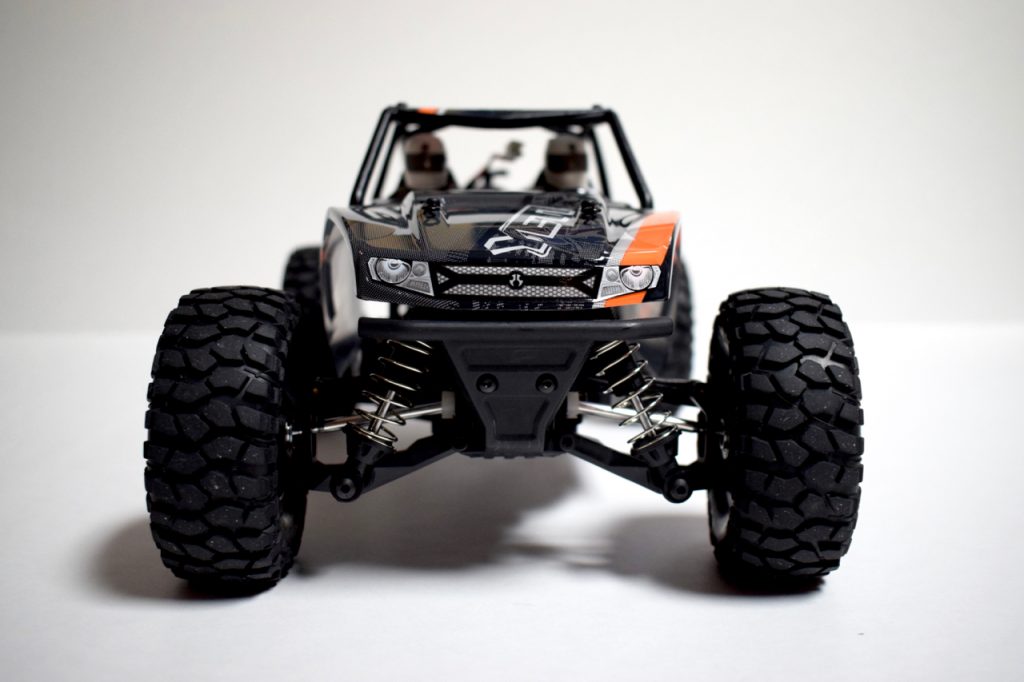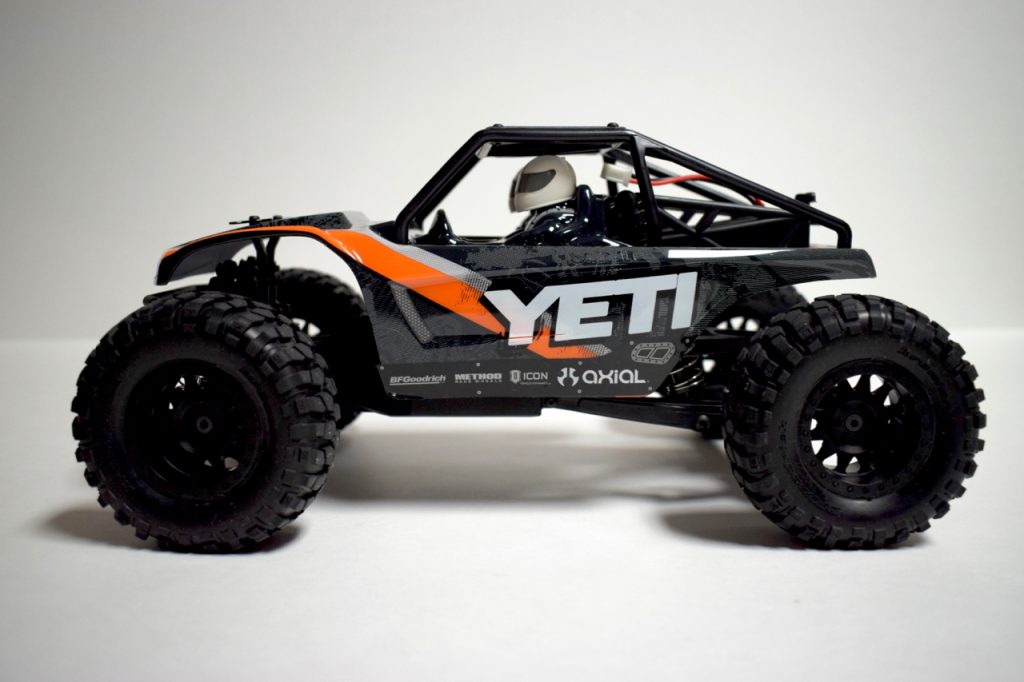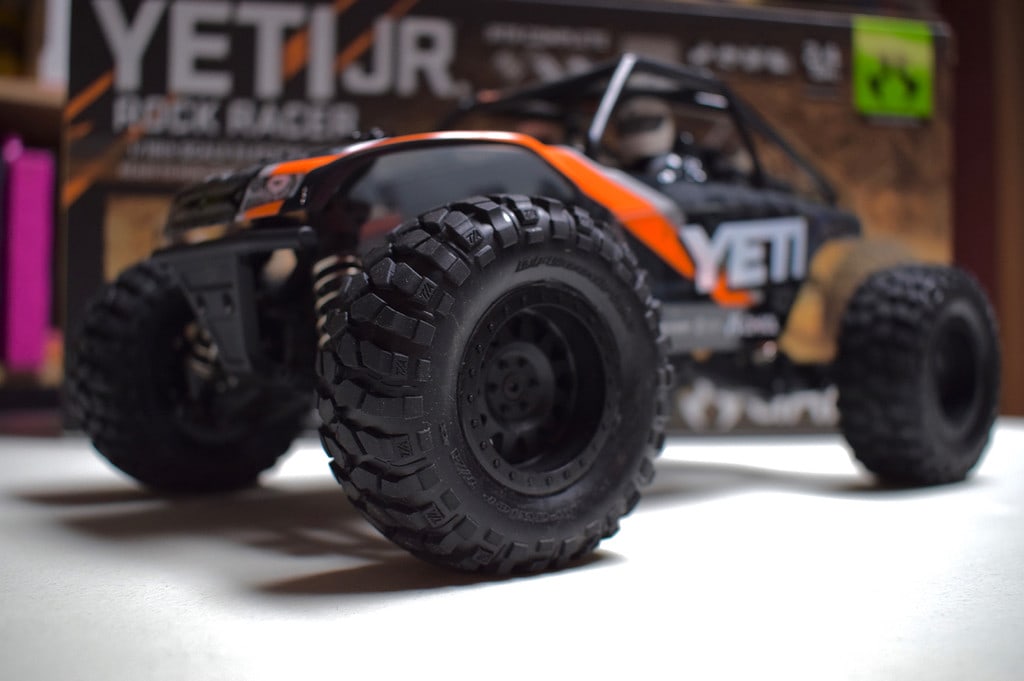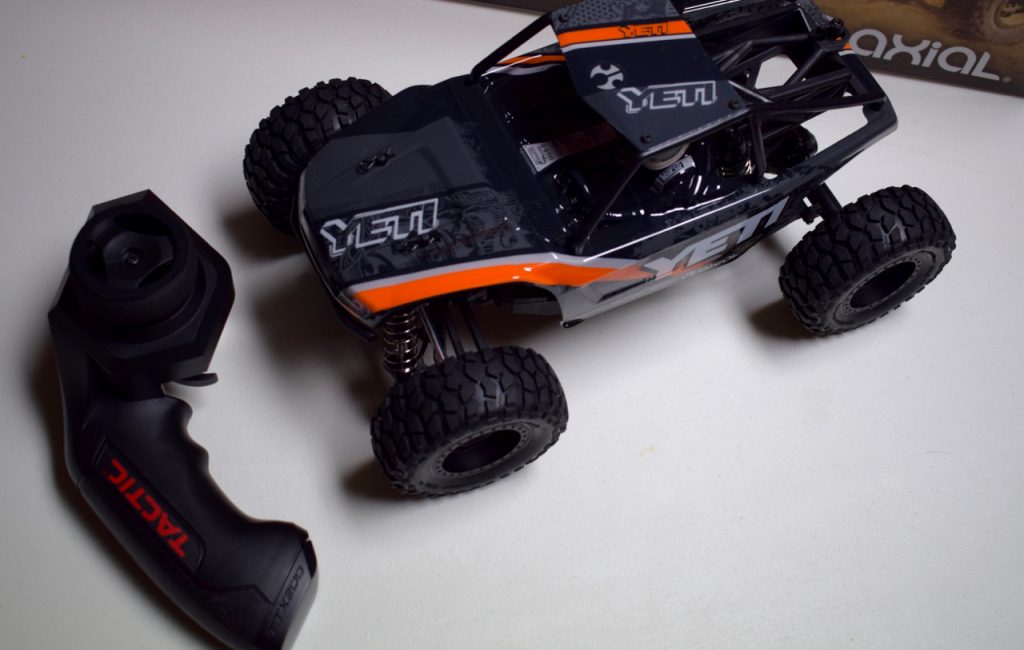First Impressions: Axial Yeti Jr. Rock Racer
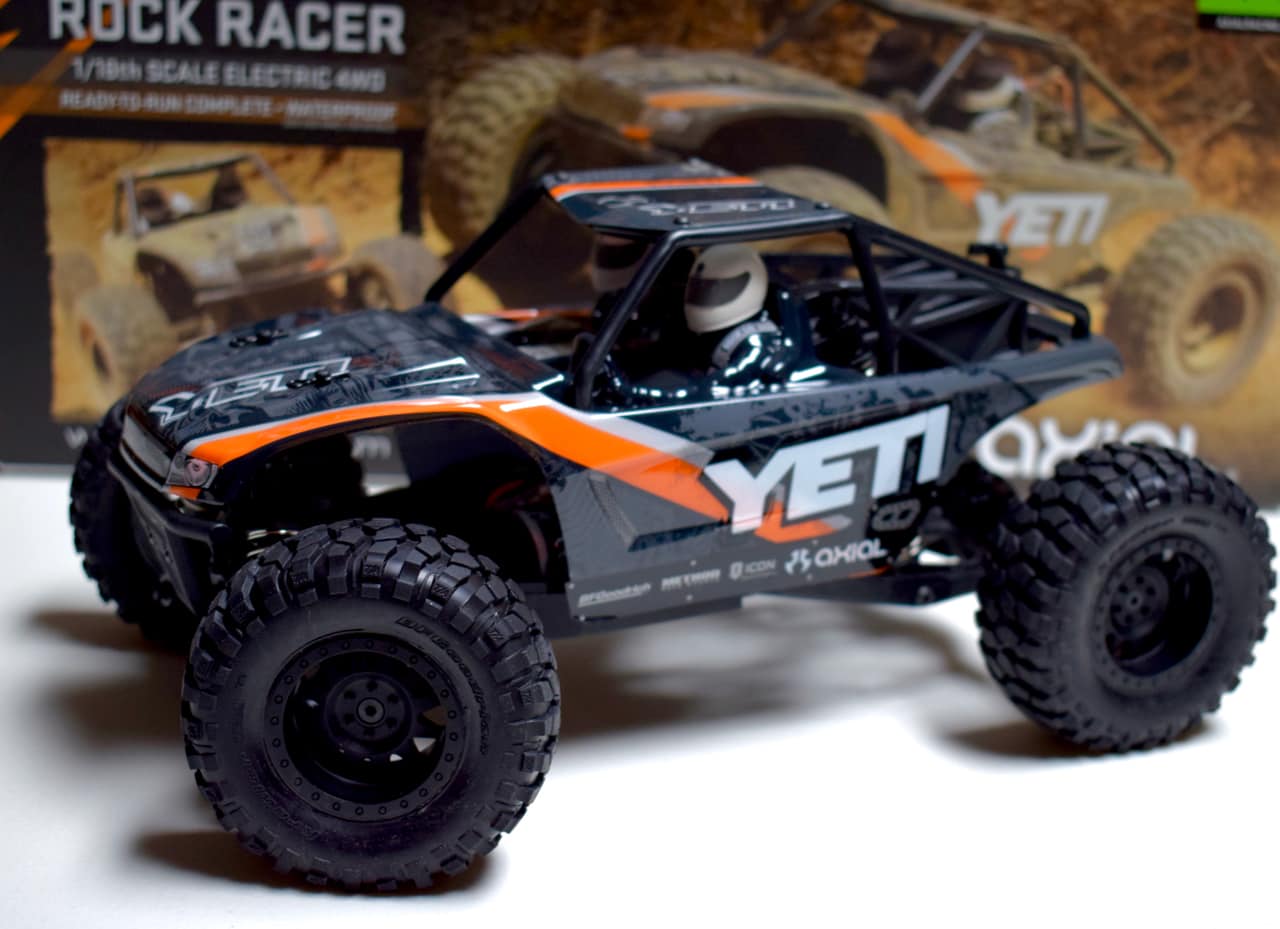
2016 introduced many new and interesting models into the R/C world. While monster trucks were one of the hot vehicle types on the 1/10 scene, there was also a boom in the number of small-scale vehicles hitting hobby shop shelves.
One of the most talked about releases of the year came during the close of 2016. Axial released two 1/18-scale models of their popular Yeti Rock Racer and Yeti SCORE Trophy Truck to much anticipation and buzz from radio-controlled enthusiasts. Not one to resist the call of a new small-scale vehicle, one of these scaled-down machines found its way into my R/C garage.
Deciding on which model to purchase may have been the hardest decision to make. While I love the looks of both the Yeti Jr. Rock Racer and the Yeti Jr. SCORE Trophy Truck, the rock racer won me over with its appearance (and for the fact that I’ve always wanted one of its larger-scale siblings).
What’s Included:
- 1 Axial Yeti Jr. Rock Racer
- 1 Tactic TTX200 transmitter/controller
- 1 7.2V, 1300mAH NiMh Onyx battery
- 1 Onyx USB-powered battery charger
- 4 AA batteries (for the transmitter)
- 1 parts bag
- 1 instruction manual
Unboxing the Axial Yeti Jr. Rock Racer
Initial Thoughts on the Axial Yeti Jr. Rock Racer
Having owned Axial vehicles in the past, I’ve come to expect certain levels of build quality and detail in their models. The Axial SCX10 and RR10 Bomber are two of my favorite vehicles in my personal collection. From the moment I lifted the Yeti Jr. Rock Racer out of its packaging, I could tell that the same attention to detail and durability existed on this smaller-scale model.
The Body
The visual appearance of the Yeti Jr. is the same that you’ll find on its larger-scale siblings. While it isn’t modeled to be a replica of a specific 1:1 vehicle, it does have a unique, aggressive look to it. I’ve been a fan of the body style that the 1/10 and ⅛ Yeti models share and that same body was one of my main reasons for picking up the junior version.
A visually-stunning graphics package has been applied to the Yeti Jr. Rock racer, which aid in its appeal. The black/gray base with orange, silver and white accents make this machine easy to spot without losing its tough persona.
The Chassis
Many of the chassis characteristics of the 1/10 and ⅛ Yeti Rock Racer exist on the Yeti Jr. The suspension setup is the same, using independent front suspension and solid-axle suspension in the rear. Another aspect of the larger-scale models that has been carried over to the 1/18 version is the hinged, flip-up body provides a quick and easy way to get into the internals of this machine without much hassle. This is a feature that I have long admired and was happy to try out in person.
Getting deep into the electronic components on other models, regardless of their size, can be a bit of a pain. The Yeti Jr. Rock Racer’s hinged body design is a simple, effective approach that allows you to get into the guts of this machine easily. The minimal use of body pins is also a bonus, (from my standpoint).
The internal layout for the Yeti Jr. Is both compact and minimal. The motor, radio, receiver, and steering servo and nestled neatly into the body tray, only allowing for room to function (and little else). This model uses a combined electronic speed control (ESC)/receiver to minimize the amount of space needed. Also in the “minimized space” category is the positioning of the steering servo.
Rather than using a front-mounted position, the servo is positioned underneath the ESC/receiver and uses three linked arms to control the direction of this rock racer. This is my first experience with this type of a setup and my initial exposure to it has been interesting.
The battery rests in a rear-mounted tray with a hinged top brace that keeps it intact during your driving adventures. This is both easy to open and access and, again, keeps initial setup and activation time to a minimum.
Drawing power from that battery is a 40T brushed motor that joins the other electronics within the body tray. The higher the number of turns a motor is rated for, the more torque it is capable of putting out. As an example, the Axial Bomber RR10 (ready-to-run) uses a 35T motor, making it great for crawling and blasting out of sticky situations. I have swapped this motor out on my Bomber, opting for a 20T motor that provides more top-end speed (without giving up much on the bottom end).
Getting back to the Yeti Jr., the 40T rated motor gave me a moment of pause as I was expecting this machine to be a slow, lurking mini-beast. Thankfully, the transmission gearing is set up to allow for impressive top-end speed, while not sacrificing torque when taking off. As of this writing, I’ve only driven this machine indoors. To that point, I’ve been thrilled with the stock performance that I’ve seen out of this little rock racer so-far.
The Radio
As Tactic’s lineup of controllers is concerned, I’m familiar with their TTX300 model (included with Axial’s RR10 Bomber), however, the TX200 has a design that I hadn’t quite seen before. While the TTX200 is smaller than the controller you’ll find in a 1/10-scale RTR package, it isn’t a “micro” controller. That said, there are some design characteristics that I’m still learning to get used to.
The grip circumference is slightly larger than what I’m used to with my other controllers, and has been the biggest (no pun intended) area that I’ve had concerns with during my few short drives. These concerns aren’t major, and are mainly centered around finding a comfort level when holding the controller. Outside of the ergonomics, the built-in functionality that the TTX200 possesses is what I’ve come to expect from a 2-channel remote.
An Indoor Yeti Sighting
As mentioned earlier, the only tricky terrain and adventure driving that my Yeti Jr. has seen has been confined to foam blocks and berber carpet. Current weather has kept my initial tests of this vehicle trapped indoors, but that’s not to say I haven’t managed to have fun during those housebound voyages.
Using a few well-placed foam ramps and barriers, I have sent the Axial Yeti Jr. flying and tumbling across the floor of my “testing lab”. From the initial takeoff burst to the final top-end speed, the quickness of this machine continues to impress. Handling is nimble and crisp, however I’ve noticed that, on some occasions, the Yeti Jr. steering doesn’t return to neutral after making a sharp turn. Whether or not this is due to the servo strength or the servo arm configuration remains to be seen.
Aside from that one noticeable detail, this vehicle has Axial DNA through and through. It’s fun to drive and can take its share of abuse. My next adventure with this mini rock racer will be a test of its outdoor prowess. If my brief indoor runs are any indication, this should be one amazing performer.
